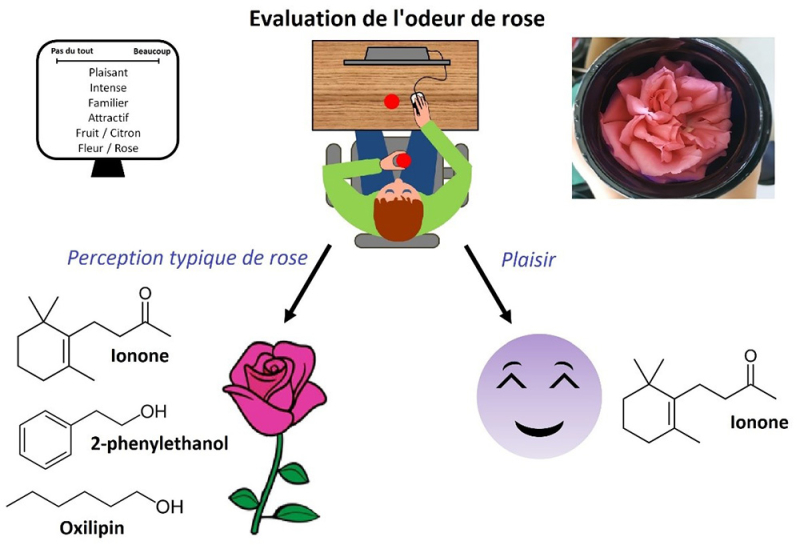Follow us on Google News (click on ☆)

In a study published in iScience, scientists reveal the unexpected importance of the specific combination of certain molecules in shaping the rose's unique olfactory signature, offering an unparalleled sensory pleasure.
A millennial history and olfactory diversity
Roses have accompanied human history for millennia. Their fragrance, particularly cherished, is used to perfume not only our gardens and interiors but also our beauty products and our own bodies through perfumes. In other words, roses have been cultivated for centuries due to their irresistible appeal to humans.
The genus Rosa belongs to the Rosaceae family and includes about 150 wild species as well as nearly 30,000 cultivars. These varieties offer immense diversity, not only in terms of colors and shapes but also in fragrances. Roses emit hundreds of volatile organic compounds, responsible for variations in olfactory perception. But which compounds precisely give the rose its iconic scent and evoke so many positive emotions in humans?
When science deciphers the captivating scent of roses
To discover this, scientists conducted a study, published in the journal iScience, aiming to explore the relationship between olfactory perception and the compounds emitted by fresh roses. In this context, they selected ten modern roses, picked at the optimal flowering stage, early in the morning when their fragrance is most intense. A panel of twenty participants was invited to evaluate these fragrances blindly using psychophysical tools. Simultaneously, they analyzed the volatile organic compounds emitted by the roses using the headspace technique coupled with gas chromatography and mass spectrometry (GC-MS).
The results confirm the major role of phenylpropanoid derivatives in rose fragrance but also reveal the unexpected importance of a specific combination of molecules: ionones and oxylipins. These compounds, with remarkable properties on emotional behavior, would significantly contribute to the hedonic effect of rose fragrance. Moreover, for the perfect rose recipe, certain molecules like aliphatics and phenolic methyl esters should only be present in very small quantities. Finally, monoterpenes, very present in rose fragrance, seem rather associated with fruity notes.
Therapeutic and horticultural applications
These discoveries open new perspectives for modeling rose fragrance, both in fundamental research and for therapeutic applications, particularly in aromatherapy, as well as in industry. In the horticultural sector, where selecting fragrant roses remains a challenge, this work provides valuable insights for identifying key compounds to prioritize when developing new varieties.

Participants were invited to smell and blindly evaluate the olfactory characteristics of different rose varieties, while their volatile organic compounds were analyzed by mass spectrometry. The results first reveal that the typical perception of rose scent would mainly be due to ionones.
The pleasant character of the scent would result from a subtle balance between ionones, oxylipins, and 2-phenylethanol, while certain molecules like aliphatic compounds and phenolic methyl esters should only be present in very small quantities. Finally, it turned out that the more a rose scent is perceived as typical of roses, the more it is considered pleasant.
© Marc Thevenet, Nathalie Mandairon
Reference:
Why do we like so much the smell of roses: The recipe for the perfect flower. Inès Adrar, Maxime Hervé, Marylou Mantel, Aurélie Bony, Marc Thévenet, Benoît Boachon, Jules Dejou, Jean-Claude Caissard, Moustafa Bensafi, Sylvie Baudino, Nathalie Mandairon.
iScience, February 21, 2025, DOI: 10.1016/j.isci.2024.111635